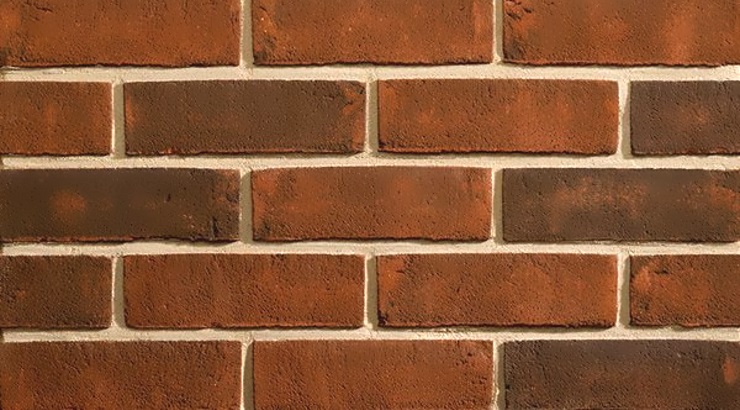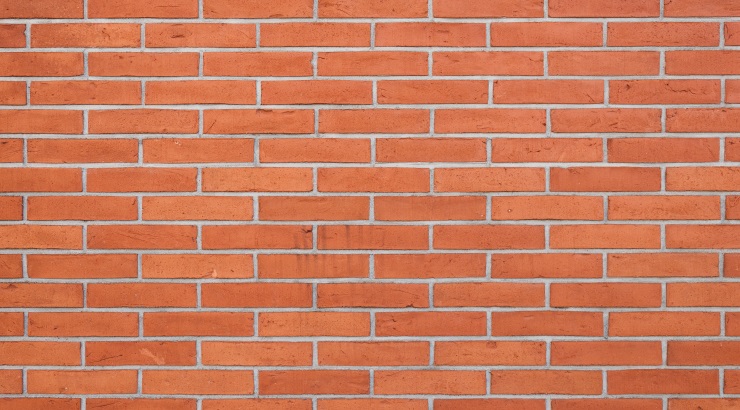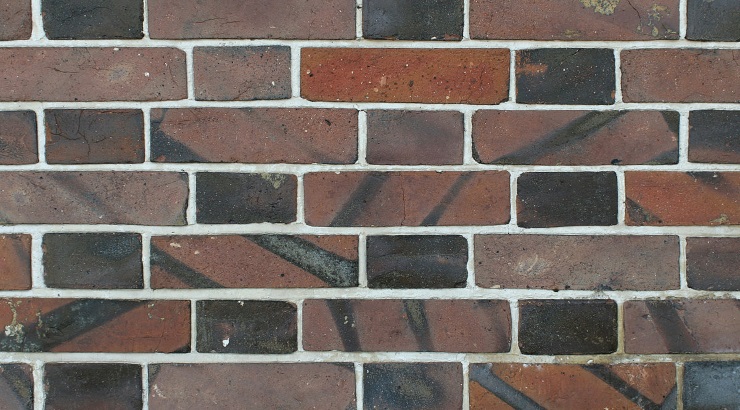Features
Types of Bricks Bonds Used in Masonry
Overview of some of the most popular brick patterns for walls.

Bricks bonds is the terminology used to refer to the patterns in which bricks are placed on top of one another to put up a structure.
Brick bonds and patterns apply to both brick walls and brick paving for patios and paths, as well as to concrete blocks and other types of brickwork construction.
Generally, bricks can be arranged as soldiers (vertically), headers (widthwise along the wall), or stretchers (lengthwise along the wall).
They are usually laid to in offset pattern to keep a sufficient lap between joints from one course to the next and to make sure that vertical joints are not placed above one another on successive courses.
Brick bonding helps to distribute weights throughout the structure to achieve maximum strength and stability while achieving a visually appealing wall pattern.
Brickwork patterns
There are many types of brick bonds, each of which comes with its own unique look, installation challenges, and structural considerations—in the case of walls.
Below are some of the most common bonds of bricks.
1. Stretcher bond
Also known as running bonds, stretcher bond are made when bricks are placed with only their stretchers visible, overlapping halfway with the courses of bricks above and below.
The bond is certainly the easiest to make since it only uses stretchers, making it one of the most common types of bricks bonds in many parts of the world.

Stretcher bond is perfect for building walls of half brick thickness, such as partition walls, chimney stacks, sleeper walls, and division walls. It is not suitable for stand-alone structural walls.
2. English bond
This is one of the strongest bonds. It is accomplished by alternating courses of headers and stretchers. Headers are placed over the stretchers in the course below, with each alternate row aligned vertically.
A quoin closeris (a brick cut lengthwise into two halves) is used at the start and end of a wall after the first header to break the continuousness of vertical joints.
3. English garden wall
This type of brick bonding is similar to the English bond, except that it has one course of headers for every three courses of stretcher. It is designed to cut the quantity of headers to minimize the time and effort spent picking bricks of about the same dimension for use as headers.
4. English cross bond
These types of bricks bonds alternate courses of headers and stretchers, with the alternating stretcher course being balanced by half a brick.
The stretchers are placed on joints between the stretchers below to make sure the alternating stretcher courses are aligned. Staggering stretchers allow the use of bricks of color or texture variation to create attractive patterns.
5. Common bond
Also known as American bond, common bond is comparable to English bond except that it has courses of headers placed in every five or six courses. Header courses are centered on the previous header course.
RELATED: The ABCs of Interlocking Blocks
To attain adequate balance in a common bond, queen closers are placed at both ends of the header courses. This type of brick bonding is commonly used in exterior load-bearing walls.
6. Flemish bond
One of the strongest types of brick bonds, Flemish bond is made by placing headers and stretchers alternating in each course. The headers of each course are laid on the stretchers of the course below.

7. Flemish garden wall
Also known as Sussex bond, this variation of Flemish bond includes one header to three stretchers per course. The header is laid over the stretcher inside a cluster of three in the course underneath.
8. Monk bond
This is another variation of the Flemish bond, which includes two stretchers between the headers per course. The headers are laid over the joint between the two stretchers in the course beneath.
9. Header bond
The header bond is made when bricks are placed as headers on the faces of the walls. The overlay is done according to the half-width of the bricks.
RELATED: Standard Brick Dimensions
To accomplish this, three-quarter brick bats are used in alternate courses as quoins. Header bonds are best for the construction of one brick-thick walls.
10. Stack bond
In this type of brick bonding, bricks are placed on top of each other with all joints perfectly aligned. This results in a weak, non-structural bond that is only suitable for decorative interior walls.
In the addition to the mentioned brickwork patterns, there are many other types of brick bonds for masonry, including 11.) Dutch bond; 12.) Facing bond; 13.) Diagonal bond; 14.) Rat Trap bond; and 15.) Running bond.
Other brick patterns for walls include 16.) Brick on edge bond; 17.) Raking bond, 18.) Zigzag bond, 19.) Dearne’s bond, 20.) Silverlock’s bond; and 21.) Herring-bone bond.












